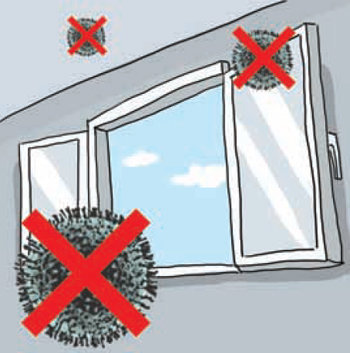Why ventilation matters so much
Why ventilation matters so much
Posted December. 05, 2020 07:45,
Updated December. 05, 2020 07:45


With every corner of the globe ailing amid the COVID-19 pandemic, South Korea is suffering a third wave with a wide range of viral contaminants at the community levels, different from the previous peaks characterized by mass infections limited to particular regions and facilities. Its secretive way of spreading poses a great threat to the nation. As winter season approaches, a rise in demand for heating equipment and little ventilation only make it difficult to look on the bright side.
An infection that occurred in a restaurant in Jeonju, North Jeolla Province, in June highlights such concerns. The place was a typical indoor space you would find in scorching summer heat that was air-conditioned with no fresh air in. An infected visitor transmitted the coronavirus to two other persons who stayed indoors at that time although they was sitting 4.8 and 6.5 meters, respectively, away from the contaminated person. Professor Lee Ju-hyung at Chonbuk National University and his research crews conclude in a study that respiratory droplets moving with air currents in an air-conditioned or heated room go three times farther than the ones traveling up to two meters at room temperature and thus cause an infection.
Some may dismiss the case as a mere small-scale infection that only affected a limited unit of people staying in the same indoor space. However, a case where more than 60 people were infected in a franchise coffee shop in Paju, Gyeonggi Province, in August also warns us that as many as hundreds of people can contract the virus according to spatial characteristics. Known as one of the most pleasant places, the coffee shop in question was crowded with many visitors spending long hours studying and working indoors without wearing a mask properly. Fully air-conditioned with no ventilation, the space turned into an epicenter of a mass infection.
Such a safety negligence may result partly from the misapprehension that outdoor air-conditioner fans double as a ventilator. Chillers and heaters do not let fresh air in but circulate air currents indoors, which automatically translates into lack of ventilation. This only makes an air-conditioned indoor space a breeding ground even though it is contaminated by just a small doses of viruses. Back then, quarantine authorities also attributed mass transmissions to lack of ventilation.
Numbers demonstrate how ventilation works to reduce the risk of infection. According to the Korea Disease Control and Prevention Agency (KDCA), more than five rounds of ventilation per hour can enhance indoor air quality by killing almost 99 percent of respiratory viruses and reducing levels of carbon dioxide, VOCs and radon gas, making it the best way of quarantine. Nevertheless, it takes some caution to ventilate indoor space in winter because it may require a higher heating cost, which thus makes it equally important to find an effective way of ventilation that ensures energy efficiency in cold weather. Additionally, an integrated cooling and heating system should be developed to control cooling/heating and ventilation at the same time.
For much of human history, we have overcome numerous obstacles and crises. The COVID-19 catastrophe is one of the many challenges that Earth has so far given to us. To overcome the ongoing crisis and rise stronger after COVID-19 is beaten up, we should bring fundamental change to how indoor environments are ventilated, cooled and heated




![[속보]美 “미국인은 이란 당장 떠나라” 대사관 긴급 공지](https://dimg.donga.com/c/138/175/90/1/wps/NEWS/IMAGE/2026/01/13/133147285.1.jpg)


